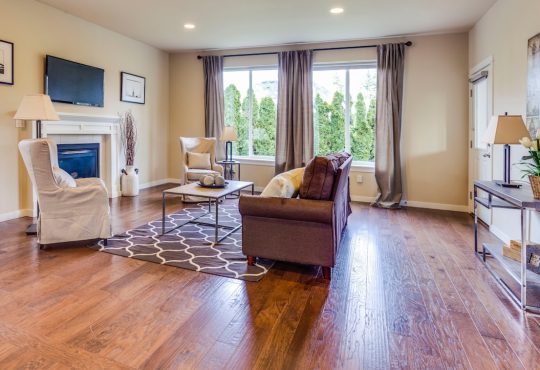
Reflecting on Space: How Mirrors Can Transform Small Rooms with Light and Depth
The Power of Mirrors in Small Spaces
Mirrors have long been a staple in interior design, and their importance cannot be overstated, especially in small spaces. Mirrors have the incredible ability to create the illusion of space, making a room appear larger and more open than it actually is. They also have the power to enhance natural light, brightening up even the darkest corners of a room. In this article, we will explore the science behind mirrors and reflection, discuss how mirrors can create the illusion of space, and provide tips on choosing the right mirrors for small rooms.
The Science Behind Mirrors and Reflection
To understand the power of mirrors in small spaces, it is important to understand how they work. Mirrors are made of a thin layer of metal, usually aluminum or silver, that is applied to a glass surface. When light hits the mirror, it is reflected back at the same angle at which it hit the mirror. This reflection creates an optical illusion that makes it seem like there is more space in the room.
There are different types of mirrors with varying properties. Flat mirrors are the most common type and reflect light in a straight line. Concave mirrors curve inward and can magnify objects, while convex mirrors curve outward and can make objects appear smaller. Each type of mirror has its own unique properties and can be used creatively in interior design.
How Mirrors Can Create the Illusion of Space
One of the main benefits of using mirrors in small rooms is their ability to create the illusion of space. By strategically placing mirrors in a room, you can make it appear larger and more open. For example, placing a large mirror on one wall can make that wall seem to recede, creating the perception of depth.
Another way to use mirrors to create the illusion of space is by creating a mirror wall. This involves covering an entire wall with mirrors, which can make a room feel much larger than it actually is. This technique is especially effective in narrow spaces, such as hallways or small bedrooms.
Mirrors and Natural Light: A Perfect Match
In addition to creating the illusion of space, mirrors can also enhance natural light in a room. By reflecting light, mirrors can brighten up even the darkest corners of a space. This is particularly useful in small rooms that may not have access to a lot of natural light.
To maximize the effect of natural light, it is important to position mirrors strategically. Placing a mirror opposite a window or a source of natural light will reflect the light back into the room, making it appear brighter and more spacious. Additionally, placing mirrors near light fixtures can help distribute the light more evenly throughout the space.
Tips for Choosing the Right Mirrors for Small Rooms
When choosing mirrors for small rooms, there are a few factors to consider. First, consider the size and shape of the mirror. In general, larger mirrors will create a greater sense of space, while smaller mirrors may be better suited for accent pieces. The shape of the mirror should also complement the overall design aesthetic of the room.
Another factor to consider is the style of the mirror. There are countless styles to choose from, ranging from traditional to modern and everything in between. Consider the existing decor and choose a mirror that will complement the overall design scheme.
Creative Ways to Use Mirrors in Small Spaces
In addition to traditional mirror placement on walls, there are many creative ways to use mirrors in small spaces. One idea is to incorporate mirrored furniture into the room. For example, a mirrored coffee table or dresser can add a touch of glamour and reflect light throughout the space.
Another creative idea is to incorporate mirrors into artwork. This can be done by framing a mirror or using mirrored tiles to create a mosaic effect. This not only adds visual interest to the room but also enhances the illusion of space.
Mirrors as Decorative Elements: Adding Style and Personality
Mirrors can also be used as decorative elements to add style and personality to a room. They can be used to create a focal point, such as a large ornate mirror above a fireplace or a statement mirror in an entryway. Mirrors can also be used to add texture to a space, such as a mirrored wall with an antique finish or a mosaic mirror with different colored tiles.
When using mirrors as decorative elements, it is important to consider the overall design aesthetic of the room. Choose mirrors that complement the existing decor and add to the overall style of the space.
How to Clean and Maintain Mirrors for Optimal Reflection
To ensure optimal reflection, it is important to clean and maintain mirrors regularly. Start by dusting the mirror with a soft cloth or feather duster to remove any loose dirt or debris. Then, mix a solution of equal parts water and vinegar or glass cleaner in a spray bottle. Spray the solution onto the mirror and wipe it clean with a microfiber cloth or newspaper.
Avoid using abrasive cleaners or rough materials, as they can scratch the surface of the mirror. It is also important to avoid spraying cleaning solution directly onto the mirror, as it can seep into the edges and damage the reflective coating.
Common Mistakes to Avoid When Using Mirrors in Small Rooms
While mirrors can be incredibly powerful in small spaces, there are some common mistakes to avoid. One mistake is using too many mirrors in a room, which can create a chaotic and cluttered look. Instead, choose one or two strategically placed mirrors that will have the greatest impact.
Another mistake is placing mirrors in the wrong location. Avoid placing mirrors directly opposite each other, as this can create a disorienting effect. Instead, place mirrors where they will reflect light and create the illusion of space.
The Endless Possibilities of Mirrors in Interior Design
In conclusion, mirrors have the power to transform small spaces and enhance the overall design aesthetic of a room. They can create the illusion of space, enhance natural light, and add style and personality to a space. By understanding the science behind mirrors and reflection, choosing the right mirrors for small rooms, and using them creatively, you can unlock the endless possibilities of mirrors in interior design. So go ahead and experiment with different mirror styles and placements to create a space that is both functional and visually stunning.
If you’re interested in creating a unique first impression in your home, you might want to check out this article on personalizing your hallway and staircase. It offers tips and ideas on how to make these areas reflect your personal style and create a welcoming atmosphere. From choosing the right colors and materials to incorporating artwork and decorative elements, this article has everything you need to transform your hallway and staircase into a statement piece. Read more: https://agutonsky.com/creeer-een-unieke-eerste-indruk-personaliseer-uw-hal-en-trap-vandaag-nog/



